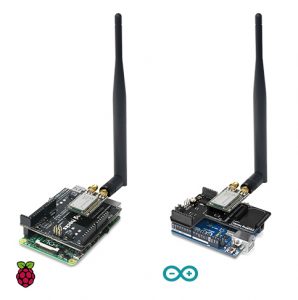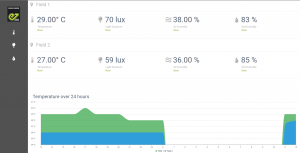
One of the major issues for machine to machine, M2M communications used for applications like the Internet of Things, IoT is to enable communications over long ranges using very low power levels. LoRaWAN™ is a low-power, wide-area network (LPWAN) specification intended for wirelessly, remotely located, often battery operated, Things in local, regional, national or global networks. LoRaWAN provides secure bi-directional communication, mobility and localization services and promises to provide seamless interoperability among smart things without the need of complex local installations. Better yet, thanks to its low power consumption, cost of pennies on the dollar compared to alternative technologies, and the ability for enterprises to deploy their own private networks for added security, LoRaWAN has an opportunity to launch the IoT space into the long-predicted huge growth well before 3GPP can even begin to roll out their first IoT-considered network for 5G, beginning in 2020.
Â
Research Proposal
Title:Â LoRa technology for M2M & IoT
Introduction:
Issues with resources like water and energy, as well increasing awareness of safety security and efficiency are driving the need for more information and better options to connect and manage advanced sensors to build a smarter world. In a few years global, national and regional networks will connect trillions of wireless devices. Even at home, hundreds of objects will be connected and send and receive hundreds of messages every day. You will be able to monitor and control any device that’s connected to the internet. The Internet of Things is going to connect the world and it will create lots of efficiencies and new business opportunities.
LoRa technology is a low-cost, low powered Long Range WAN – that addresses network coverage problems, sensors energy efficiency, installation and costs.
Purpose
The purpose of this research is to
- study and collect technology specifications and details
- run tests
- range tests; both in line of sight (LOS) and no line of sight (NLOS)
- power consumption tests ()
- come up with use cases
Research Paper
What is LoRa?
LoRa is the physical layer or the wireless modulation utilized to create a long range communication link. It is a unique spread spectrum modulation technique which allows sending data at extremely low data-rate to extremely long ranges. The low data-rate and LoRa modulation leads to very low receiver sensitivity (down to -134dBm ), which combined to an output power of +14 dBm means extremely large link budget: up to 148 dB. This results in a range greater than 15 KM in line of sight (LOS) links and up to 2KM in non line of sight (NLOS) links in urban environments.Â
LoRa Key Features
- Long Range – greater than 15KM
- High Capacity – up to 1 million nodes
- Long battery life
- Secure and efficient network
- Interference immunity
What is LoRaWAN?
LoRaWAN is a media access control (MAC) layer protocol designed for large scale public networks with a single operator. It is built using LoRa modulation scheme. It defines the communication protocol and system architecture for the network while LoRa physical layer enables the long-range communication link. The protocol and network architecture have the most influence in determining the battery lifetime of a node, the network capacity, the quality of service, the security, and the variety of applications served by the network.
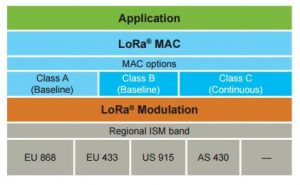
Network Architecture
Many existing deployed networks utilize a mesh network architecture where individual end-nodes forward the information of other nodes to increase the communication range and cell size of the network. While this increases the range, it also adds complexity, reduces network capacity, and reduces battery lifetime as nodes receive and forward information from other nodes that is likely irrelevant for them. Long range star architecture makes the most sense for preserving battery lifetime when long-range connectivity can be achieved.
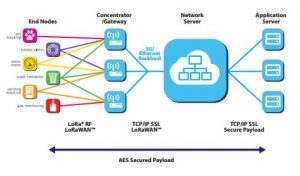
LoRaWAN Key Features
- Long Range
- Greater than cellular
- Deep indoor coverage
- star topology
- Max lifetime
- Low power optimization
- >10x vs cellular M2M
- Multi Usage
- High capacity
- Multi latent
- Public network
- Low Cost
- Minimal infrastructure
- Low cost end node
We got some LoRaWANÂ 868 module from Cooking-hacks to create a POC project. We got the 433Mhz version for Nepal and the 868Mhz version for Netherlands.
Specifications:
- Protocol: LoRaWAN 1.0, Class A
- LoRaWAN – ready
- Frequency: 433 MHz or 868 MHz ISM frequency band
- TX Power: up to +14 dBm
- Sensitivity: as good as -136 dBm
- Range: >15 km at suburban and >5 km at urban area. Typically, each base station covers some km. Check the LoRaWAN Network in your area.
- Chipset consumption: 38.9 mA
- Radio Bit Rate: from 250 to 5470 bps
 Range Test
Day 1:
On day 1 we went for a short drive to Bhaisepati. We were able to get a good data reception at a distance of 2KM which was at a top of a hill looking down on Kathmandu valley (LOS). We drove further inwards where there was no LOS link but we could still get some packets at a distance of 4.1KM(2.6 mi) with significant packet loss.
While returning back to office, we did an urban area (NLOS), we started to get good reception at a distance of about 1KM from our office. Even though the datasheet suggests we should get roughly 2KM in urban area, due to the dense buildings near our office, our result was significantly less.
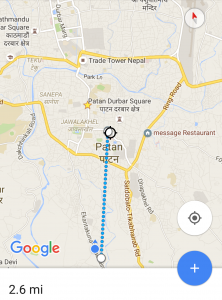
Day 2:
On day 2 of our Range Test, we drove towards Bhaktapur. Our main goal was to test the line of sight(LOS) range.
Our first stop was Suryabinayak Forest. We hiked to the top of a hill at Suryabinayak where we would see Kathmandu valley. This was at a distance of around 10.3KM. We were able to get good reception with no data loss at the top, however as we climbed down the hill, the packet loss started to follow. Reaching to a dead stop after just few meters down.Â
To test the range even more, we drove towards Changunarayn. On the way, at a cliff of a hill facing Kathmandu valley we were able to get a very good data reception. Here, we even got positive signal to noise ratio (SNR). The distance from this point to the receiver was 12.5 KM (7.8 mi).
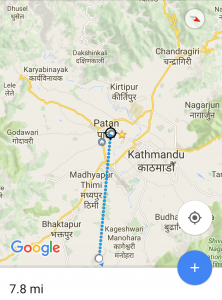
Power Consumption Test
For the power consumption test, we connected an arduino to the LoRa module using the multiprotocol shield. We have also connected a BME280 sensor to it.
Current Consumption:
- Idle (Sleep Mode) : 37mA
- Transmit Data : 85mA
- Estimated Battery Life (3000mAh AA) : 2.87 Days
- Estimated Battery Life (240mAh Coin Cell) : 0.23 Days
**Assuming we transmit data once every Hour.
Reason For Low Battery Life
- Arduino Board consumes about 30mA without the microcontroller.
- LoRa Arduino Shield consumes about 9mA without LoRa Module.
- Because unnecessary components consuming power on the Development Boards like LEDs, Power Supply Units e.t.c.
Possible Solutions To Increase Battery Life
- The best option would be to design our own circuit board with only the components that we require and selecting suitable microcontroller.
- The second option is to use the Adafruit’s Feather M0 Radio with LoRa Module. Adafruit claims it consumes very less power during sleep, plus it has built in connector for LiPo battery with charging circuit built in.
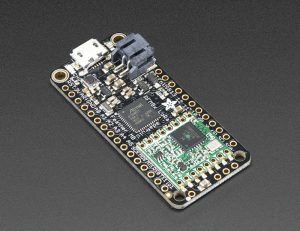
 Test Conclusion
Hence, considering all the tests we’ve done, LoRa seems to be a very good choice where data has to be transmitter over long distance. Also by optimizing the hardware for battery efficiency and adding a solar panel, we could just install the LoRa node and forget about it.
LoRa Technology – Use Cases
- Agriculture
- Transmitting sensor data from farms that covers huge area to automate most of the manual tasks for better productivity and lower manpower.
- Smart City
- Using M2M communication, street lights could be switched automatically in the presence of people which helps to save power.
- Buildings
- Notify authorities when a fire extinguisher in the building is blocked.Â
Proof of Concept Project
Environment Monitoring SystemÂ
We have built an environment monitoring system which reads environmental data like Temperature, Pressure, Humidity, Soil Humidity. The collected data is relayed over a LoRa link to a central gateway hosted on a Raspberry Pi. The collected data is stored in mongoDB. For data visualization, the stored data are plotted on a graph.
System Architecture
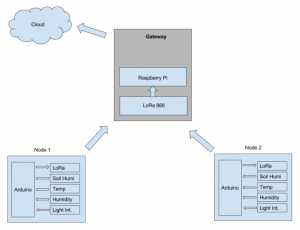
The above block diagram shows the system architecture of our Environment Monitoring System. At the sensor node, we have an arduino connected to various sensors and a LoRa module. It periodically reads the sensor data and transmits it over the LoRa module to the gateway. At the gateway, we have a raspberry pi connected to a LoRa module. It waits for data to be received by the LoRa module then transmits it to a server via socket.
Project Details
- POC Project:Â Environment Monitoring System
- SVN: svn://10.0.1.4/javra/rnd/int/IoT_EnvMon(PoC)
- Site:Â Â poc.javra.com:8000

